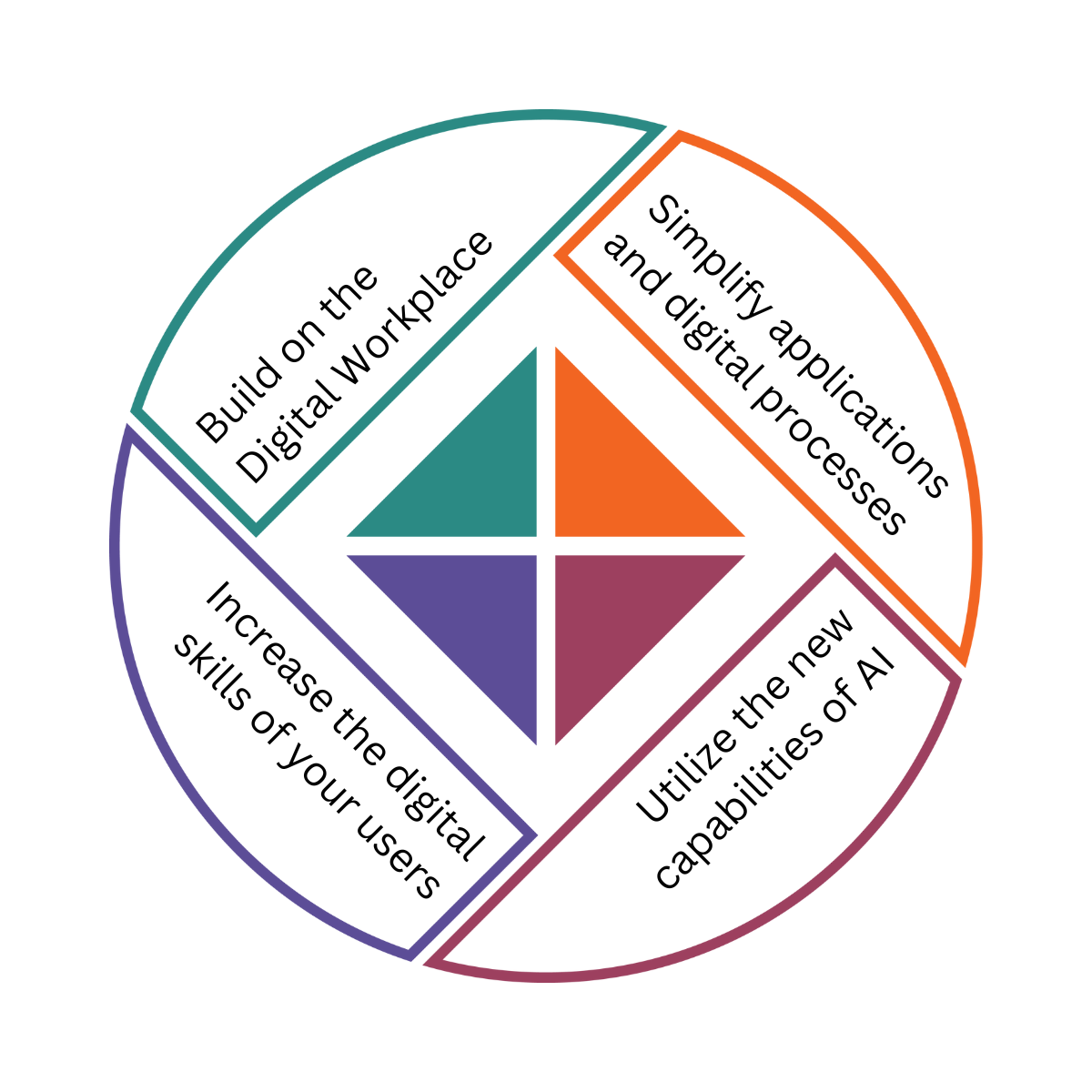Get an overview of the top trends for the Digital Work based on a wide variety of assessments and publications
In recent years, I have supported many companies in the development and expansion of the digital workplace. It is fascinating to find smart solutions to the different requirements with my customers. At the same time, I learn a lot from the challenges and limitations that the projects present.
In parallel, I look at a wide variety of assessments and publications on the current trends in the digital workplace. There is an incredible amount of information and bets on the further development of digital work.
I hope that my personal conclusions from published analyses and practical experience will help you to derive your own assessment for your company.

The journey of the Digital Workplace started with technology
Initially, we talked mainly with IT department. We helped introduce digital tools and platforms. About 10 years ago, the departments increasingly took centre stage. IT took on the role of technical consultant. The aim was to establish digital services that would help the departments to realise their requirements as independently as possible.
The success story of cloud services has resulted in ever better services and tools. However, a new area of conflict has also emerged between simple tool handling and mapping complex requirements.
Specialised application versus integrated platform
There are many solutions with simple handling and a very good user experience. These solutions are customised for specific application scenarios. For example, for internal communication, for financial accounting or the production department.
But the advantage of targeted use is offset by a few disadvantages:
Over the last 20 years, I have repeatedly observed that the number of specialist applications has increased continuously. This has led to a significant increase in the cost of operating and supporting the applications. Data silos also emerged. Comprehensive data exchange and evaluations became increasingly complex. For this reason, attempts were made to consolidate the zoo of applications every 3-5 years, only to grow again in the following years.
The mega trend of the last years was to introduce platforms that can cover numerous requirements for individual applications. One of the most successful of these platforms is the Microsoft Cloud with M365, Azure, Power-Platform, Fabric and Dynamics365. For more details look to the blog Microsoft Cloud Solutions.
Unfortunately, this approach also has a downside: although the interfaces are becoming easier to use, the complexity is increasing due to the sheer number of components and options.
It is also challenging for end users to master the current platforms with their numerous apps. According to analysts, not even 10% of employees have sufficient digital skills.
The physical work environment is changing
This can also mean developing more “smart” workspaces. Employees want to access their necessary tools easily and secure from wherever they work.
The digital workplace has become a key factor in the competition
Based on the Social Collaboration Study of Campana & Schott, the digital workplace has become a key factor in the competition to bring in and retain employees, as nearly two-thirds of those surveyed report.
Companies have already made great advances in implementing the digital workplace. Companies with more experience see only minor challenges. Unlike those where implementation is still in its early days.
Digitally skilled employees will drive the competitive advantage
Following analysts, for 30% of organizations, competitive advantage will come from employees’ ability to creatively use emerging technologies.
- An end-to-end digital platform must be anchored in the company’s digital strategy. Only a platform that enables comprehensive and networked work will offer the necessary synergies. In my view, only a cloud platform can offer the increasing requirements for high security standards and flexible access options.
- Applications and digital processes must become simpler. In order to keep up with the rapid pace of changing requirements, we must learn to reduce the sometimes-high complexity of individual applications and enable standardized and simple use. According to analysts, the trend towards the use of low-code platforms will continue.
- We need to utilize the new capabilities of artificial intelligence. The complexity of business processes can be significantly reduced if applications and processes are rethought in this respect. However, “old wine in new bottles” will not be enough to leverage the potential of artificial intelligence.
- The digital skills of users must be increased. There is now a great deal of experience of successful change and adoption measures as part of the introduction of a digital workplace. Nevertheless, user training is just getting started. It is important not to let this fall asleep at the end of an implementation project, but to continue it consistently.


